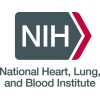
Cepheid Rectal Sample Validation Study
GonorrheaChlamydia1 moreThe purpose of this study is to validate Xpert CT/NG for the detection of CT and GC in rectal samples as part of the PA DOH and CLIA requirements. The evaluation of samples obtained from the pharynx is exploratory and will provide new information on the frequency of pharyngeal infection due to CT and GC. A secondary objective will be to evaluate the prevalence of Trichomonas vaginalis in vaginal and rectal samples using both the Xpert system and AC2 to assess whether women positive for this pathogen rectally usually or always have vaginal infection due to this pathogen. The investigators hypothesis is that real-time PCR (polymerase chain reaction) amplification testing with the Cepheid Xpert CT/NG will have greater sensitivity than culture in detecting Neisseria gonorrhoeae in rectal samples. The investigators also hypothesize that Xpert CT/NG will be equivalent to the Gen-Probe APTIMA Combo2 (AC2) in detecting Chlamydia trachomatis and Neisseria gonorrhoeae in rectal samples.

Chlamydia Trachomatis Immunology and Vaccinology Study
ChlamydiaThe primary objective is to prospectively follow 200 women with or at risk of cervicitis to determine the chlamydia-specific cellular responses that correlate with protection against incident infection. The hypothesis is that a positive IFN-y response by peripheral CD4+ T cells responding to stimulation with HSP60 will be significantly associated with protection from incident C. trachomatis infection.

A Validation Study for Detecting Chlamydia and Gonorrhea in Rectal Samples
GonorrheaChlamydiaOur hypothesis is that nucleic acid amplification testing (NAAT) with the APTIMA Combo2 (AC2) will have greater sensitivity than culture in detecting Neisseria gonorrhoeae in rectal samples. We also hypothesize that AC2 will be equivalent to NAAT with the Becton Dickinson ProbeTec in detecting Chlamydia trachomatis and Neisseria gonorrhoeae in rectal samples.

Immunopathogenesis of Chlamydia
CHLAMYDIA INFECTIONSSexually transmitted Chlamydia trachomatis infections are a widespread public health concern due to their prevalence and potentially devastating reproductive consequences, including pelvic inflammatory disease, infertility, and ectopic pregnancy. The goal of this study is to evaluate the risk factors for adverse outcomes following genital tract infection with Chlamydia trachomatis and to evaluate whether or not the presence of C. trachomatis in the rectum act as a reservoir for infection.

Self-taken Penile Meatal Swabs for Chlamydia, Gonorrhoea and Mycoplasma Genitalium Detection
Sexually Transmitted DiseasesBacterialObjectives: To compare self-taken penile meatal swabs versus first-catch urine samples for the detection of chlamydia, gonorrhoea and Mycoplasma genitalium from the penile urethra using nucleic acid amplification tests. To assess the acceptability of self-taken penile meatal swabs compared with first-catch urine samples. To assess the prevalence of Mycoplasma genitalium in those with urethritis. To assess the prevalence of Mycoplasma genitalium antimicrobial resistance. To evaluate the utility of using Mycoplasma genitalium resistance-guided therapy. To compare the cost of using self-taken penile meatal swabs versus FCU samples for the correct detection of Chlamydia trachomatis, Neisseria gonorrhoeae and Mycoplasma genitalium. Methods: Men and transwomen presenting for a sexual health screen will perform a self-taken penile meatal swab followed by a first-catch urine (FCU) sample. Both will be analysed using the Aptima Combo 2 test (Hologic, San Diego, California [CA], USA) for chlamydia and gonorrhoea. In those with urethritis they will also be analysed using Aptima MGen test for Mycoplasma genitalium. Details of demographics, past history, sexual history, clinical symptoms and signs will be collected. The acceptability of each sample will be assessed using a patient questionnaire. The samples of those infected with Mycoplasma genitalium will be tested for Mycoplasma genitalium macrolide and fluoroquinolone resistance mutations by in-house polymerase chain reaction (PCR) using Sanger sequencing to characterise mutants in the 23s gene for macrolide resistance and DNA gyrase subunit A (gyrA) and DNA topoisomerase IV subunit C (parC) genes for fluoroquinolone resistance. The result of this will be used to guide the therapy prescribed to treat the infection. Primary outcome: Sensitivity, specificity, positive and negative predictive values of self-taken penile meatal swabs compared with FCU samples for the detection of chlamydia, gonorrhoea and Mycoplasma genitalium in the penile urethra. Secondary outcomes: Acceptability of self-taken penile meatal swabs compared with FCU samples for the detection of chlamydia, gonorrhoea and Mycoplasma genitalium. Prevalence of Mycoplasma genitalium in those with urethritis. Prevalence of Mycoplasma genitalium antimicrobial resistance. Utility of using Mycoplasma genitalium resistance-guided therapy. Cost of using self-taken penile meatal swabs versus FCU samples for the correct detection of Chlamydia trachomatis, Neisseria gonorrhoeae and Mycoplasma genitalium.

Screening of Gonococcal and Chlamydial Infections in the Third Trimester
Gonococcal InfectionChlamydia InfectionsUntreated maternal infection with gonorrhea and/or chlamydia can have serious complications in pregnancy and the neonatal period. In Ontario, routine screening for these infections is done in the first trimester of pregnancy, positive cases are treated with antibiotics, and all newborns are given antibiotic eye ointment within 24 hours of birth. Recently, the Canadian Pediatric Society recommended stopping universal prophylaxis for newborns, with instead, focus on screening and treatment of these infections in pregnancy. Given that these infections can occur at any time in pregnancy, and exposure at delivery provides a significant risk to infants, more information is needed about the rates of infection throughout pregnancy and health-care provider compliance with guidelines to make this change without undue risk. With this information optimal timing of testing can be evaluated.

Incubation Time and Test of Cure of Chlamydia Trachomatis
Chlamydia Trachomatis InfectionObjective was to understand the dynamics of Chlamydia trachomatis (Ct) detection by nucleic acid amplification testing (NAAT) after treatment and consequences for test-of-cure practice.

Self-Obtained Vaginal Swabs for Chlamydia and Gonorrhea Testing
Chlamydial InfectionGonococcal InfectionTo evaluate the agreement between NAAT results for Chlamydia trachomatis and Neisseria gonorrhoeae infection obtained with self-obtained vaginal swabs (SOVS), collected in a non-clinical setting vs. NAAT results using SOVS collected in a clinical setting. This is a new use of this specimen type as SOVS are FDA cleared only for use in clinics. The NAAT (Gen-Probe APTIMA Combo 2® Assay (AC2)) result with the home-collected SOVS specimen will be compared to the result obtained with an SOVS collected in the clinic on multiple platforms (Direct Tube Sampling (DTS) / Panther / Tigris). The term "home-collected" is used to refer to any specimen that is not collected in a clinic, since there is no certainty that a specimen is collected "at home" or in a restroom in an office setting, etc. To compare the SOVS results to an FDA cleared predicate test with the collection of two clinician collected vaginal swabs.

Pediatrics:Chlamydia, Sickle Cell Anemia and Stroke Risk - Ancillary to STOP II
Blood DiseaseAnemia3 moreTo establish a link among Chlamydia infection, sickle cell anemia, and stroke risk.

Clinical Evaluation of the APTIMA® Assay for Chlamydia Trachomatis Using the PANTHER™ System
Chlamydia TrachomatisThe objective of this multi-center clinical study is to demonstrate that the APTIMA(R) Assay for Chlamydia trachomatis (CT; "ACT Assay"), which is cleared for use on the TIGRIS DTS (Direct Transfer) System ("TIGRIS System"), can be tested on the PANTHER System. The intended use of the ACT Assay will be unchanged except for the inclusion of its use with the PANTHER System. ACT Assay performance on the PANTHER System is comparable to performance on the TIGRIS System.
